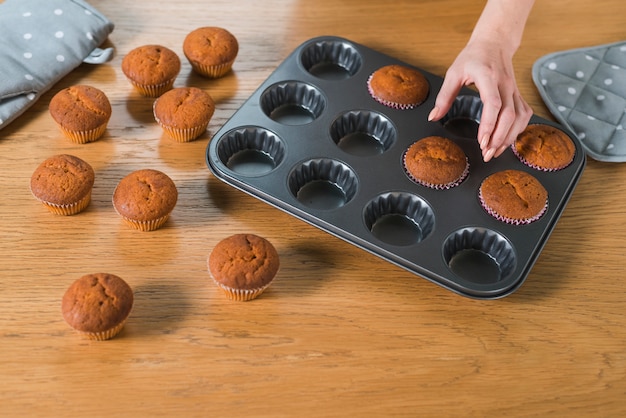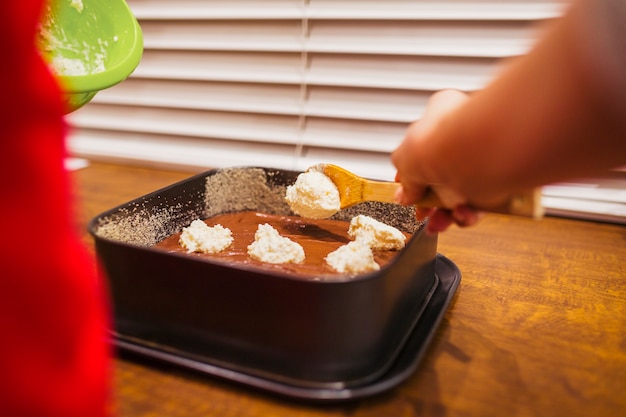Ah, meatballs. The aroma of them baking in the oven is enough to make anyone's mouth water. But figuring out how long to bake them can be a bit of a culinary puzzle. You want them cooked through, but not dried out, right? That's where this guide comes in. Based on years of meatball-making adventures (and a few mishaps along the way), I've put together a comprehensive guide to baking perfect meatballs at 350 degrees fahrenheit (175 degrees Celsius). So, grab your apron, gather your ingredients, and let's get baking!
Part 1: Setting the Stage

Choosing Your Meat
Before we even think about baking, we need to choose our meat. The world of meatballs is your oyster – you can use beef, pork, lamb, chicken, turkey, or even a blend of meats. My personal favourite is a mix of beef and pork – it offers a nice balance of flavour and texture. But, if you're a purist, you can definitely use just one type of meat. The key is to use a meat that has a good amount of fat. Fat equals flavour and juiciness, so don't be afraid to go for a cut that's got some marbling.
Adding Some Texture
To add some texture and help bind the meatballs together, you can incorporate some breadcrumbs or rolled oats into your mixture. These ingredients will absorb the moisture and create a firmer texture, preventing the meatballs from falling apart during baking. And don’t forget about your favourite seasonings! Herbs, spices, garlic, onion, a pinch of red pepper flakes – feel free to get creative and add your own unique flavour profile. Just remember, it's better to under-season than over-season, so start with a little bit and add more if needed.
Size Matters
The size of your meatballs plays a crucial role in the baking time. Smaller meatballs, about 1 inch in diameter, cook faster than their larger counterparts. Consistency is key here. Try to make them as uniform in size as possible so they bake evenly. A bit of effort in the shaping stage will pay off in the end.
Part 2: The Baking Sheet Prep

The Perfect Baking Sheet
You'll need a baking sheet that's big enough to accommodate your meatballs with some breathing room. Overcrowding the sheet can cause them to steam instead of bake, leading to uneven cooking and potentially soggy results. If you're lucky enough to have a non-stick baking sheet, that's fantastic. Otherwise, a quick spray of cooking oil or a light coating of butter will do the trick.
Preheating is Key
Before we get to the meatballs themselves, let's talk about preheating. Set your oven to 350 degrees Fahrenheit (175 degrees Celsius) and give it ample time to reach the desired temperature. You can even preheat your baking sheet while the oven is warming up. This will help the meatballs cook more evenly and prevent sticking. It's all about getting that perfect, even bake, remember?
Part 3: The Baking Process

Arranging the Meatballs
Now comes the exciting part – arranging those beautiful meatballs on the baking sheet. Make sure they're not touching each other, leaving enough space for air to circulate around them. This is crucial for even browning and cooking. If you're baking a large batch, you may need to bake the meatballs in two or more batches to ensure even cooking.
Baking Time
The general baking time for meatballs at 350 degrees Fahrenheit (175 degrees Celsius) is between 20-25 minutes, turning them halfway through. However, remember that every oven is unique, so keep a close eye on them. The key is to check for doneness. They should be cooked through, and the internal temperature should reach at least 160 degrees Fahrenheit (71 degrees Celsius).
Checking for Doneness
Use a meat thermometer to check the temperature, or you can carefully cut one open to see if it's cooked all the way through. If you find they need a little more time, bake for another few minutes. And don't forget to let them rest for a few minutes before serving. This will allow the juices to redistribute, resulting in even more succulent meatballs.
Part 4: Baking Times for Different Sizes
Here's a handy guide for baking times based on the size of your meatballs:
| Meatball Size | Baking Time |
|---|---|
| 1 inch | 20-25 minutes |
| 1.5 inches | 25-30 minutes |
| 2 inches | 30-35 minutes |
These are just estimates, so always check for doneness. It's better to err on the side of caution and bake them a little longer than not long enough. Nobody wants undercooked meatballs!
Part 5: Baking Meatballs in Sauce
Adding Extra Flavour and Moisture
Sometimes, I like to bake my meatballs in sauce. It's a delicious and easy way to add extra flavour and moisture. You can use any sauce you like – marinara, spaghetti sauce, creamy tomato sauce, you name it. The key is to make sure the sauce is thick enough to coat the meatballs properly. It's a good idea to preheat the sauce slightly before adding the meatballs. This will ensure that the sauce is hot enough to cook the meatballs through.
The Baking Process
Preheat your oven to 350 degrees Fahrenheit (175 degrees Celsius). Place your meatballs in a baking dish, then pour the sauce over them. Cover the dish tightly with foil, and bake for 30-40 minutes, or until the meatballs are cooked through. Remove the foil for the last 10 minutes of baking to allow the sauce to thicken and the meatballs to brown on top. It's a simple method that yields delicious results.
Part 6: Tips for Perfect Meatballs
Here are a few tips to help you create the perfect meatballs:
- Don't Overmix: Overmixing can make the meatballs tough, so just mix the ingredients until they're combined.
- Let Them Rest: Allow the meatballs to rest for a few minutes before baking them. This will help them hold their shape better in the oven. If you don't have time to rest them, just be gentle when forming them.
- Space Them Out: Make sure there's enough space between the meatballs on the baking sheet. This will allow them to cook evenly and brown properly. If they're too close together, they'll steam instead of bake.
- Use a Thermometer: A meat thermometer is your best friend when baking meatballs. It ensures that they're cooked through without drying them out.
- Experiment!: Don't be afraid to get creative with your meatballs. Try different types of meat, seasonings, sauces, or even add cheese or wrap them in bacon. The possibilities are endless!
Part 7: Serving Up Your meatball masterpieces
Meatballs are incredibly versatile and can be enjoyed in many ways. They're delicious served with pasta, rice, potatoes, or even tucked inside a sandwich. You can also use them as a topping for salads or soups, adding a hearty and flavorful element to your dish.
Personally, I love serving meatballs with spaghetti and marinara sauce, or with mashed potatoes and gravy. They also shine on a bed of arugula with a balsamic glaze. The possibilities are truly endless!
Part 8: meatball variations
There's a meatball recipe out there for everyone. Here are just a few of my favourites to inspire your culinary adventures:
- Swedish Meatballs: These classic meatballs are known for their creamy, tangy sauce and soft texture.
- italian meatballs: These flavourful meatballs are often made with a combination of beef, pork, and veal and are typically served with marinara sauce.
- greek meatballs: These delicious meatballs are often made with lamb and feature herbs like oregano and mint.
- Spicy Meatballs: For those who like a little heat, try adding some red pepper flakes or a touch of jalapeno pepper to your meatball mixture.
- Mini Meatballs: These bite-sized meatballs are perfect for appetizers, snacks, or even as a topping for salads.
- Turkey Meatballs: A healthier option, turkey meatballs are still packed with flavour and can be used in a variety of dishes.
- Beef and Pork Meatballs: A classic combination that delivers a rich and savory flavour.
- Lamb Meatballs: These meatballs offer a unique and aromatic flavour that's perfect for Mediterranean dishes.
Each type of meatball has its own unique flavour and texture. Experiment and find your favourite!
Part 9: FAQs
Here are some common questions about baking meatballs:
1. Can I bake meatballs in a slow cooker?
Yes, you can definitely bake meatballs in a slow cooker. Place the meatballs in the slow cooker, add your sauce, and cook on low for 4-6 hours, or on high for 2-3 hours. The meatballs will be tender and cooked through. Just be sure to keep an eye on the liquid level and add more if needed to prevent the meatballs from drying out.
2. What if my meatballs are sticking to the baking sheet?
If your meatballs are sticking to the baking sheet, try greasing it with a bit of oil or butter. You can also use parchment paper to line the baking sheet. Just make sure the parchment paper is large enough to cover the entire baking sheet. If you're using a non-stick baking sheet, make sure it's properly seasoned and cleaned regularly.
3. How do I know if my meatballs are done?
The best way to determine if your meatballs are cooked through is to use a meat thermometer. The internal temperature should reach at least 160 degrees Fahrenheit (71 degrees Celsius). You can also cut one open to check. If it's cooked through, it should be a light pink color inside. If it's still pink, bake it for a few more minutes.
4. Can I freeze meatballs?
Yes, you can freeze meatballs for up to 3 months. Place them in a freezer-safe bag or container, ensuring that the air is squeezed out before sealing. To use them, thaw them in the refrigerator overnight or in the microwave. You can also cook them from frozen, but add a few minutes to the baking time.
5. What are some good ways to add flavor to meatballs?
Here are a few ideas to elevate your meatball game:
- Mix and Match Meats: Use a blend of different types of meat for a more complex flavour profile.
- Embrace Herbs and Spices: Experiment with herbs like oregano, basil, thyme, parsley, or rosemary, and spices like garlic powder, onion powder, paprika, or cumin.
- Add Some Cheese: Grated Parmesan cheese, crumbled feta, or even a bit of mozzarella can add a delicious salty and creamy touch.
- Use Flavourful Sauces: Marinara, spaghetti sauce, bbq sauce, or even a sweet and sour sauce can elevate your meatballs to a whole new level.
Just have fun with it and see what you come up with!
There you have it, a comprehensive guide to baking perfect meatballs at 350 degrees Fahrenheit (175 degrees Celsius). Now, go forth and bake some delicious, juicy meatballs! Bon appétit!
Everyone is watching

Perfect Rice Every Time: The Ultimate Guide to Cooking Rice
Cooking TipsAs a self-proclaimed foodie, I've always been a bit obsessed with rice. It's the foundation of countless cuisi...

Prime Rib Roast Cooking Time Chart: Per Pound Guide
Cooking TipsPrime rib roast. Just the name conjures images of lavish dinners, crackling fires, and hearty laughter. It’s ...

The Ultimate Guide to Cooking Asparagus: Tips, Techniques, and Recipes
Cooking TipsAsparagus. The mere mention of this spring delicacy conjures up images of vibrant green spears, crisp and burs...

Ultimate Guide to Cooking the Perfect Thanksgiving Turkey
Cooking TipsThanksgiving. Just the word conjures up images of overflowing tables laden with delicious food, the scent of r...

How Long to Bake Potatoes in the Oven (Perfect Every Time)
Cooking TipsBaked potatoes are a staple in my kitchen. They're incredibly versatile, delicious, and surprisingly easy to m...
